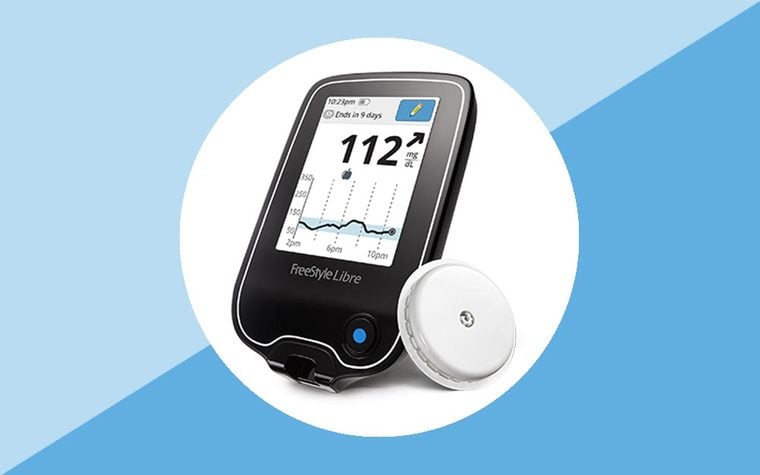Attention, Diabetics: A Better Needle-Free Blood Sugar Monitor Is Here
Updated: Aug. 27, 2020
Great news for people with diabetes: The FDA has approved a blood-sugar-monitoring device that's virtually needle-free and can be worn continuously for up to 14 days.

If you’re one of the 30 million Americans living with diabetes, then you already know that self-testing your glucose levels over the course of each day is a fundamental part of staying on top of your condition. The trouble is that self-testing has never been particularly easy. Since the first self-monitoring tests came out in the 1970s, people with diabetes have had to prick their fingers multiple times a day to track their blood sugar. The accuracy also left a little to be desired. That’s changed: In 2017 the FDA approved the ten-day FreeStyle Libre Flash Glucose Monitoring System, a glucose self-monitoring system that patients can wear continuously without repeat finger sticks. But recently the FDA approved a version that can be worn continuously for up to 14 days—and this version appears to offer improved accuracy as well, according to Healthline. Make sure you know the 10 commandments of diabetes.
“While different continuous glucose-monitoring (CGM) devices have been on the market for the past 20 years and have been upgraded continuously, [in 2017] the FDA approved the FreeStyle Libre,” says Maria Tulpan, MD, an endocrinologist and diabetes specialist practicing in New York City. “The FreeStyle Libre is the first wearable CGM device that does not require finger-stick calibration to provide accurate glucose readings. This revolutionary device, which is significantly more affordable than others on the market and allows patients to obtain glucose values throughout the day and night without routine finger sticks, is a first in diabetes management.”
Prior to the FDA’s approval of the Freestyle Libre, CGMs were so bulky, cumbersome, expensive, and painful—all those finger sticks—that many patients found it difficult to comply with the self-testing regimens prescribed by their doctors. As a result, such patients were not managing their diabetes as well as they could or should have been. Now, however, users of the FreeStyle Libre can measure their glucose levels with a simple wave of a mobile reader above a small, round sensor worn on the back of the upper arm. They’ll be alerted immediately if their glucose levels are too high (hyperglycemia) or too low (hypoglycemia); at that point they may require finger sticks to make treatment decisions. Users can also observe how their glucose levels change throughout the day. And with the 14-day version—the longest-wearing CGM on the market—the startup time has been reduced from 12 hours to one.
Real-world evidence from more than 55,000 users across Europe showed that users of the ten-day Freestyle Libre checked their glucose levels an average of 16 times per day—three times more than the minimum recommended U.S. and European guidelines. The higher rates of scanning associated with the Freestyle Libre have been strongly correlated with improved glucose control in clinical studies, including one published in The Lancet.
Even before its approval, patients who were testing the Freestyle Libre found it convenient. “Zero insertion pain,” tweeted Freestyle Libre user Molly Schreiber. Here are the lifesaving things you must do if you’re living with diabetes.
